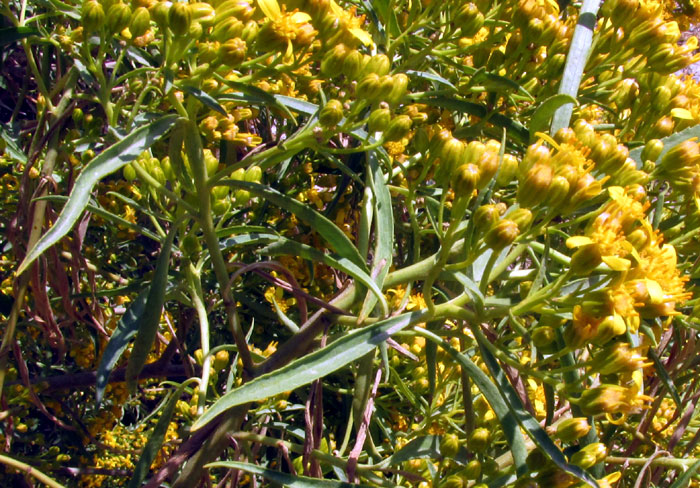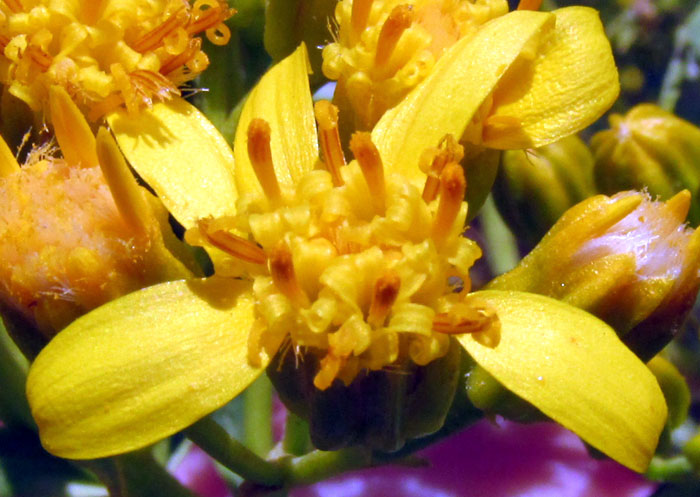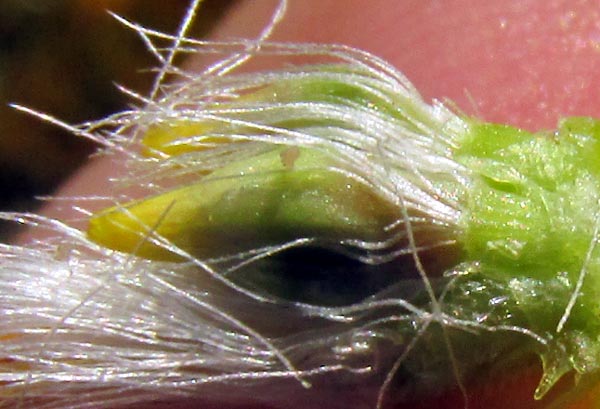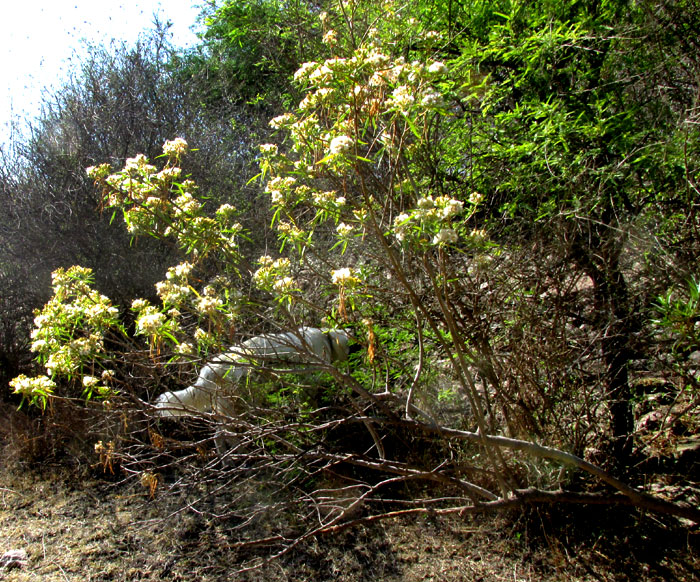Excerpts from Jim Conrad's
Naturalist Newsletter
entry dated February 27, 2022, issued from near Tequisquiapan, elevation about 1,900m (6200 ft), N20.565°, W99.890°, Querétaro state, MÉXICO
(~N20.55°, ~W99.89°)
WILLOW RAGWORT

Beside a rubble heap at the edge of town it's hard to say whether the prodigiously flowering, honey-bee-mobbed, 3-meter tall (10ft) woody shrub was planted or is growing wild. At this mid-dry-season, you see them fairly regularly in fencerows and along roadsides, often well away from people, always hard to say if they've been planted. This was a new species for me, so I "did the botany."

With small flowering heads bearing both ray and disc florets, it's obviously a member of the Composite or Aster Family, the Asteraceae. But that's a huge family with several members in this area of much branched and woody shrubs producing panicle-type flower clusters. The two genera to be thought of are Baccharis and Senecio. The baccharises I know are white flowered and species I know in Senecio are yellow/orange-flowered, so I was betting on Senecio, whose species often known as groundsels.

The flowers look like those of Senecio, especially in the way the ray florets are few and somewhat irregularly spaced. However, more distinctive of Senecio than the flowering heads are the involucre's bracts, or phyllaries, shown below:

In Baccharis, the phyllaries are arranged in 2-5 overlapping series, while in Senecio they're in 1 or 2 series, so this looked more like Senecio. Finally, when you break open a flowering head, in both Baccharis and Senecio you find no scale-like paleae wedged between the disc flowers, which you do in many species, plus in both genera the pappi consist of slender hairs atop the future cypsela-type fruit. However, I looked at them anyway:

All these details led to an identification that was neither Baccharis nor Senecio, though it was almost the latter. It's the Willow Ragwort, BARKLEYANTHUS SALICIFOLIUS, Barkleyanthus being a genus I'd never heard of. In fact, until 1974 it didn't exist, and even today here in Mexico authorities tend to refer to our plant as Senecio salignus. The genus was erected to hold one just one species, our golden bush -- a "monotypic" genus, whose species has no very close known, living relative.
Whatever the case, this is a fine species, occurring from the arid, upland southwestern US south throughout Mexico's dry lands, to El Salvador, in some places being abundant and even "semiweedy," exactly as seen here.
Medicinally, it's been used traditionally for intermittent fevers and rheumatism. In the southernmost state of Chiapas it's been documented used as an insecticide in cornfields, plus it's been seen used in steam baths, and of course beekeepers know how their honeybees benefit from them.
entry dated April 12, 2023, issued from near Tequisquiapan, elevation about 1,900m (6200 ft), N20.565°, W99.890°, Querétaro state, MÉXICO
(~N20.55°, ~W99.89°)
WILLOW RAGWORT FRUITING

When Willow Ragworts are loaded with tiny, pappus-bearing fruits and sunlight is bright, they are nearly as eye-catching as during their flowering season, seen above at the edge of a dry reservoir, with a local white dog behind.

The one-seeded cypselae are rough-textured and short-hairy.